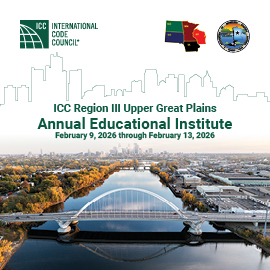
How the One Water Movement Made Blue Hole Primary School a Leader in Water Reuse
The One Water movement is an approach to water management that seeks to integrate the management of all water resources in a more sustainable manner.
Few resources are as important or as precious as water, but it can be difficult to minimize waste while maximizing the use of both potable and non-potable water.
The One Water movement hopes to change that by educating and guiding communities toward a better future in which water (including its quality, use and conservation) is always top of mind.
The One Water movement is an approach to water management that seeks to integrate the management of all water resources (including drinking water, wastewater, stormwater and groundwater) in a more sustainable manner. Rather than treating these different sources of water separately, the One Water approach aims to view them as part of a single interconnected system.
This movement is already making an impact – in 2023 alone, the U.S. Water Alliance found that 80 communities were working on or had completed a One Water plan.
One of the most notable One Water communities can be found in Wimberley, Texas, home of Blue Hole Primary School. The school, which opened in August 2020, was built in partnership between The Meadows Center for Water and the Environment at Texas State University, the Wimberley Valley Watershed Association (WVWA) and the Wimberley Independent School District (WISD).
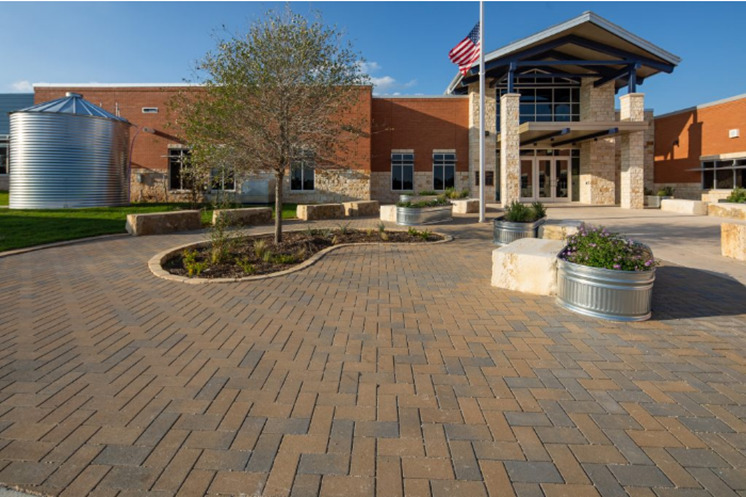
Plans for Blue Hole Primary initially involved a new lift station and sewer line, which would have been required to connect the school to Aqua Texas’ (water utility) collection system, at a cost of roughly $750,000. The steep price tag wasn’t the only drawback: Wimberley was a growing community that, if not managed correctly, could exceed its water supply. There were also concerns that droughts would worsen the problem and that water runoff could contaminate nearby swimming areas.
To overcome these challenges, Blue Hole Primary ultimately chose a water reuse system that would cost less (just under $450,000), reduce waste and use non-potable water to flush toilets and to irrigate the school’s landscaping.
Nick Dornak, who was Director of Watershed Services at The Meadows Center during the One Water School project, praised the tangible benefits resulting from water reuse.
“Now the effluent is enhancing the school property with an amenity for the cost of regular system maintenance, rather than WISD paying a monthly sewer bill to Aqua Texas for the water to be disposed,” Dornak explained.
Water Reuse Without Disrupting Nearby Environments
Blue Hole Primary was designed with several beneficial features, including a rainwater collection system that uses the school’s 78,000-square-foot roof.
See Related: Updated Rainwater Harvesting Standard: Conserving Water for the Long Run
Water from both the roof and the HVAC condensate is stored in a 200,000+ gallon tank and used to flush toilets (this water is dyed to indicate it’s non-potable) and to irrigate the landscaping. Used toilet water is transferred to an on-site system that treats 4,000 to 5,000 gallons per day to irrigate the school’s athletic field.
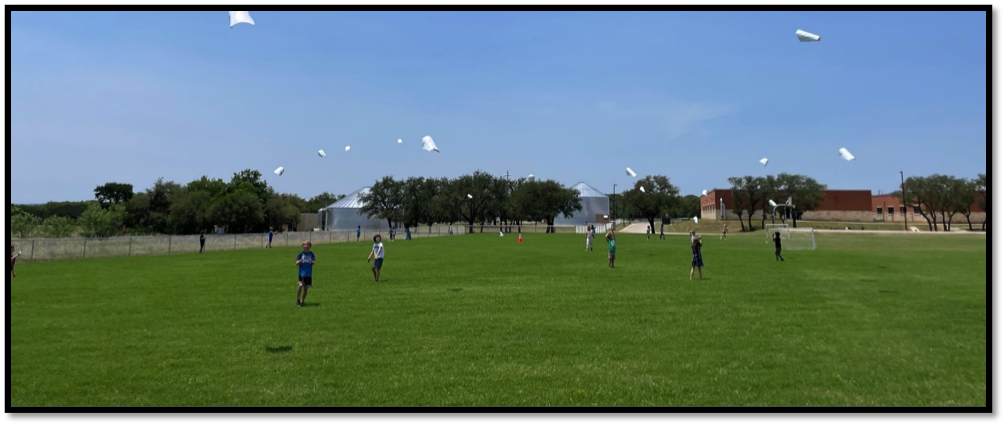
“In addition to the water conservation and reuse features, we wanted to demonstrate green stormwater infrastructure across the campus for managing water quality,” said Dornak. “We worked with the civil engineering team at Doucet and Associates to incorporate best management practices, including permeable pavers, rain gardens, vegetated swales and curbless parking lots to slow down and treat stormwater on-site.”
Dornak added that Blue Hole Primary eliminated the need for “expansive, expensive, unattractive and over-sized detention ponds” with green stormwater infrastructure that makes room for the water to slow down and percolate through the soil. During normal rain and even flood events, the infrastructure allows water to recharge local groundwater.
“From a water quality perspective, the volume and quality of stormwater leaving our site is equivalent to pre-development conditions,” he said.
Students have been encouraged to learn about the water collection and reuse system and were invited to produce a video demonstrating its many attributes. They took note of the library rain tube, which clearly showed water pouring in from the roof. They also discussed the color-coded pipe chase window, which identifies the different types of water flowing through the school.
- Red and blue = hot/cold potable water
- Green = greywater (used water without toxic elements)
- Purple = site-harvested water (rainwater and HVAC condensate)
- Yellow = ventilation
Rich Anderson, Director of PMG Technical Resources at the International Code Council, is excited about how One Water School might influence the way water is consumed and disposed by future generations.
See Related: The Future of On-Site Direct Potable Water Reuse in the International Codes®
“Exposing these kids to water reuse and on-site capturing has the power to change the mentality of society at a young age,” said Anderson. “By exposing these young kids now, it becomes the norm and not the exception.”
Incorporating Water Reuse with Safety and Efficiency as the Primary Focus
Part of Dornak’s job was to assure the community that the school’s water system would be safe for both kids and adults. Actions speak louder than words, however, and Blue Hole Primary was committed to providing safe water for every use case.
“We decided to include UV treatment for the captured rainwater and HVAC condensate that is used to flush toilets,” said Dornak. “We also added a dye to the treated rainwater and HVAC condensate to help identify the source of potential system leaks and to let kids know that they are using reused water when they flush.”
In addition to its water collection and reuse innovations, Blue Hole Primary installed multiple water-efficient fixtures to further improve the school’s water economy. From water bottle refill stations and reduced flushing volumes to efficient sinks/dishwashing appliances, Blue Hole Primary maintained its laser focus on efficiency throughout.
“Upgrading to the most efficient plumbing fixtures is generally the best bang-for-the-buck when it comes to water conservation,” said Dornak. “A big caveat here was that the superintendent wanted to make sure that the toilets were not super low flow. This is a school with kids from ages 3 to 8. We wanted to make sure there was sufficient flushing power when the toilets were met with a challenge!”
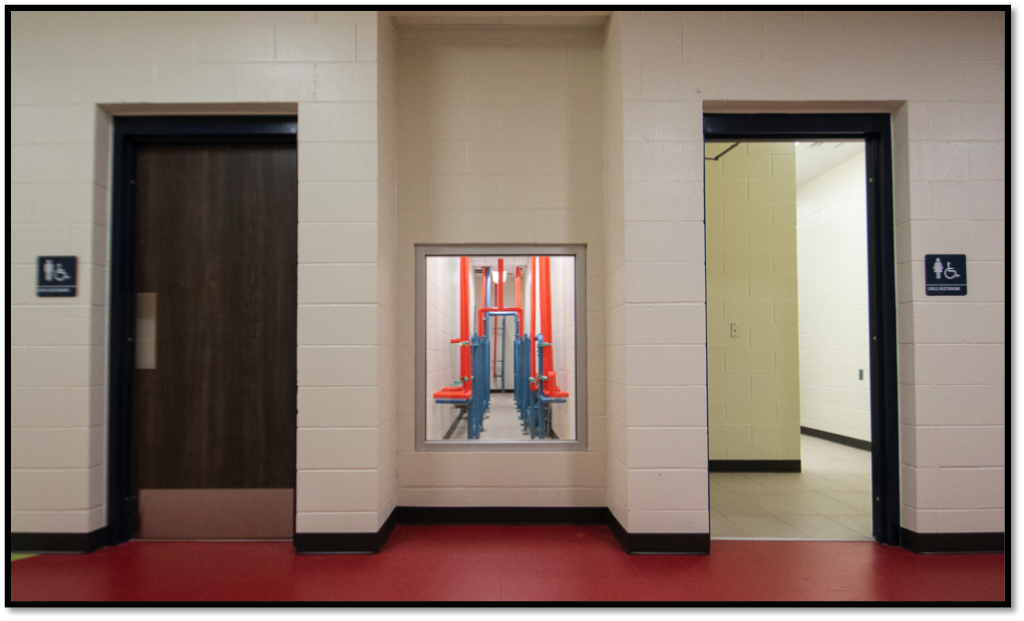
If a problem arises, Blue Hole Primary is prepared.
“We provided dual plumbing for the toilets with backflow preventers,” Dornak continued. “Based on our research and historic climate data, we should have sufficient rainwater and HVAC condensate to handle 100% of the toilet flushing demand. But we wanted to have built-in redundancy from the potable water line in the case of maintenance or extreme drought.”
Water and Monetary Savings Continued Long After Construction
While the startup costs were an impressive incentive, Blue Hole Primary is enjoying many additional savings too.
“In the first year of operation we had a few hiccups with startup of the rainwater system,” said Dornak. “But we still consumed about half the potable water used at the local elementary school which was built using standard, modern construction practices and some water-saving features.”
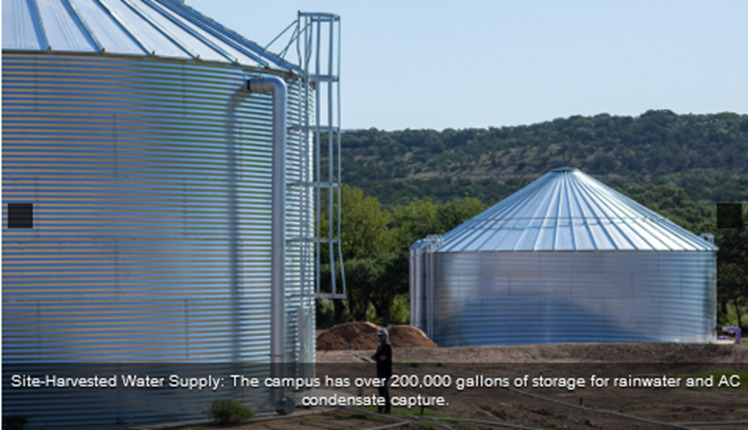
Blue Hole Primary used 541,000 gallons of water during the 2020-2021 school year, 49.4% less than Jacob’s Well Elementary, which is only a few miles away. This is despite Blue Hole Primary having 39 more students.
Further, Blue Hole Primary paid $7,630 for its water utilities during the whole school year, 76% less than what Jacob’s Well paid ($31,780) during the same period.
“My seven-year-old son, Townes, is in 2nd grade at this school right now,” Dornak boasted. “He sees his school, and all the water efficiency, as the way things are done. It is not theoretical or abstract. That is powerful reinforcement for what we hope can be a paradigm shift for water management in Texas.”
The Code Council has established a World Water Awareness campaign that will raise awareness about the global water crisis and the collective responsibility to address it through long-term, consistent water conservation efforts. To learn more, click here.





